FOOD OF THE FUTURE
What will we be eating in 2050? Health and sustainability will go hand in hand for a better diet
According to the United Nations, there will be 9.7 billion people on Earth by 2050. It is estimated that food production will have to increase by 70 % to be able to feed everyone. The food industry is already finding ways to address the challenge and new foods, which can be anything from insects - backed by the Food and Agriculture Organization (FAO) - to microalgae and even artificial meat, will gradually find their way onto our supermarket shelves.
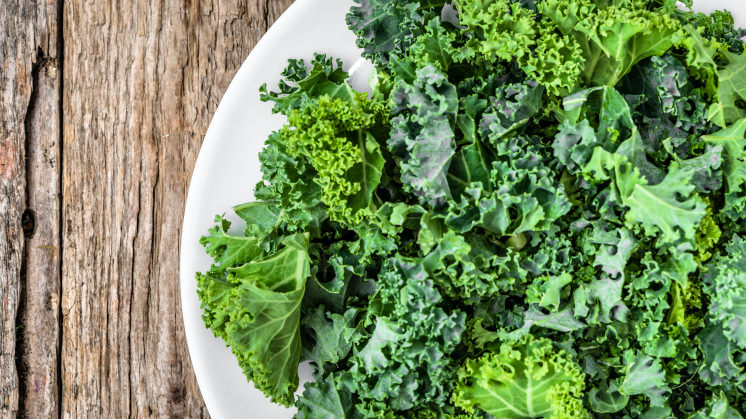
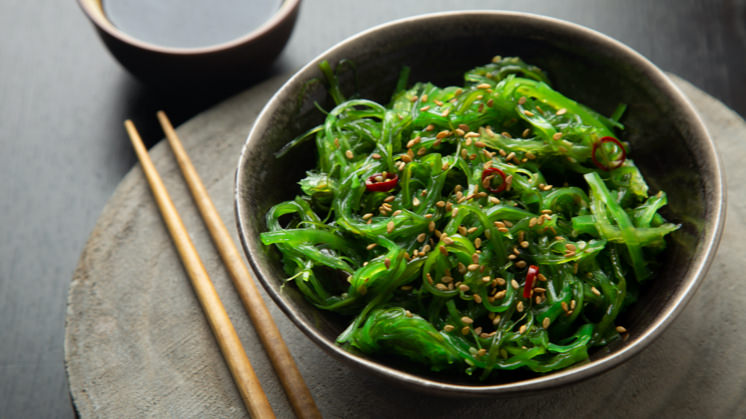
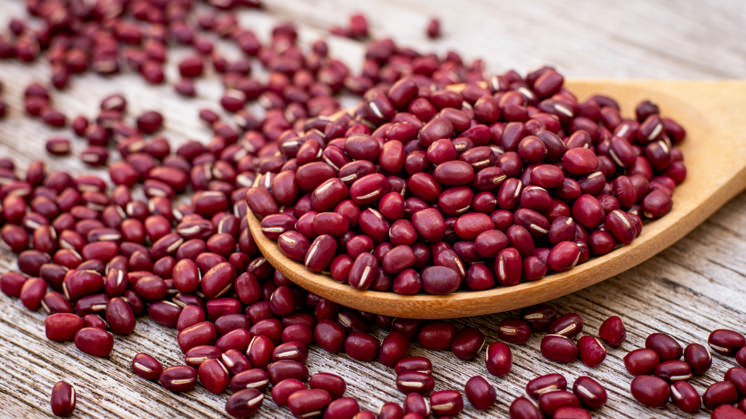
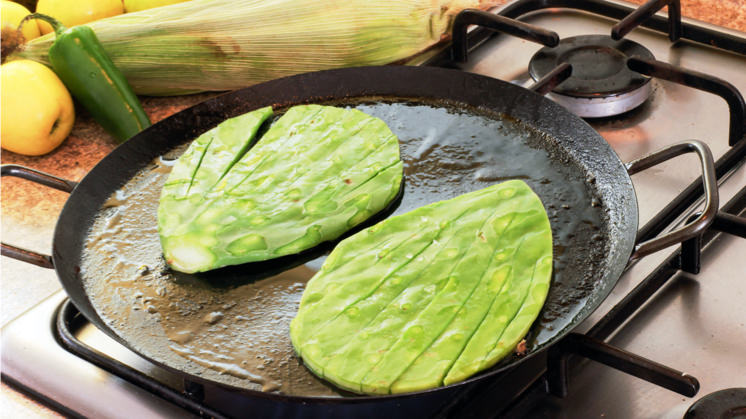
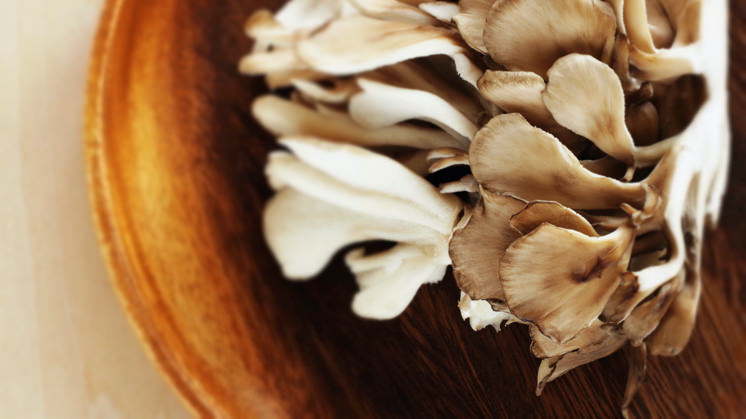
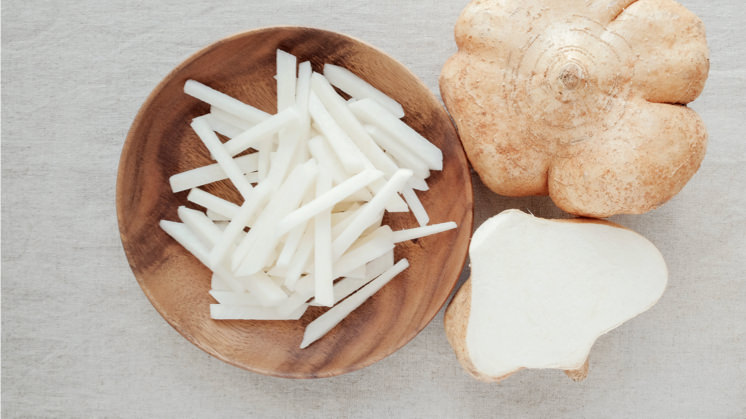
At this rate, within 30 years there will be almost 10 billion people on the planet. This would not matter if it were not for the fact that our resources are increasingly limited and the environmental impact of the food industry continues increasing. In fact, according to a United Nations study, this industry is responsible for 30 % of all energy consumed in the world and for 22 % of the gases causing global heating.
NUTRITION OF THE FUTURE
A study published by the Food and Agriculture Organization (FAO [PDF] External link, opens in new window.) states there is growing, worrying evidence that the biodiversity that supports our food systems is disappearing and is seriously endangering the future of food. In light of the increasing threat posed by food insecurity, a question emerges: what will we eat in the decades to come? New foods, new habits and new trends, such as organic farming and foodtech have, the answer.
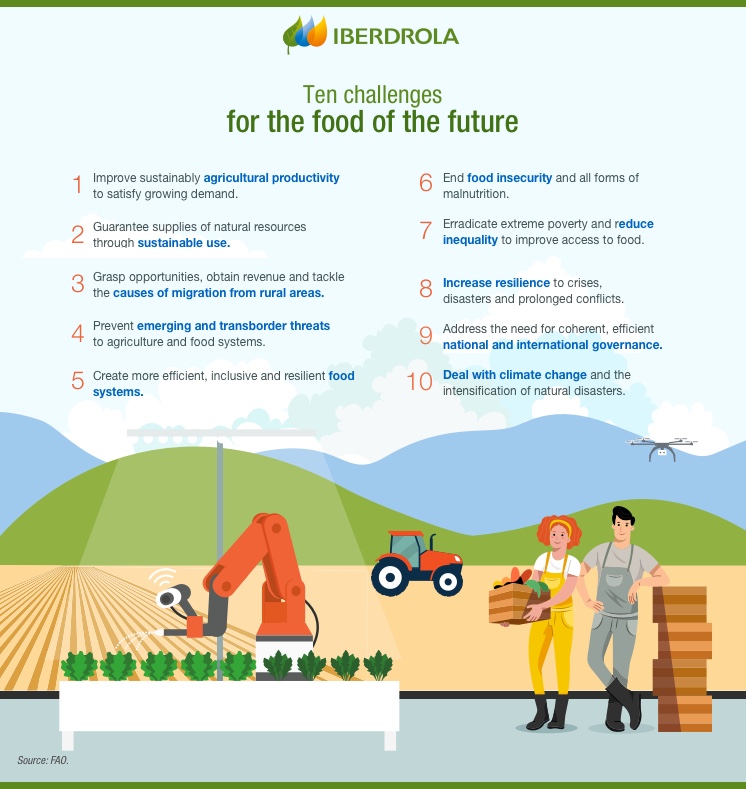
NEW FOOD HABITS
Eating habits are not immune to the sustainability revolution being experienced almost everywhere in the world. In the last decade, humankind, and particularly youngsters, has woken up to the need to live and consume in ways that are kinder to the environment. For example, more and more people are trying to reduce food waste by buying loose products and consuming only what is necessary. People are also opting for organic products that are better for the environment.
Another current linked to these new habits is the veggie movement: More vegetables and less meat - as discussed by the sustainable futurist Jim McClelland in SHAPES External link, opens in new window.— and fish. One piece of data from one of the world's most populous countries, backs this up: almost 19 % of the Mexican population according to data collected by Gourmet Show — one of the main gastronomic festivals in Mexico — identifies themselves as vegetarian. But as well as consumption, food trends are heavily influenced by production. In this regard, organic farming and foodtech, for example, are steadily carving out a niche in today's economy to connect food, sustainability and innovation.
External link, opens in new window.— and fish. One piece of data from one of the world's most populous countries, backs this up: almost 19 % of the Mexican population according to data collected by Gourmet Show — one of the main gastronomic festivals in Mexico — identifies themselves as vegetarian. But as well as consumption, food trends are heavily influenced by production. In this regard, organic farming and foodtech, for example, are steadily carving out a niche in today's economy to connect food, sustainability and innovation.
Organic farming, a method that involves obtaining produce using the most natural techniques possible - that is to say without chemicals and adopting practices in tune with the ecosystem - to obtain healthier, more nourishing food while protecting the soil, preventing the spread of infestations and caring for the environment, is growing at a good pace. According to the most recent FiBL report (The World of Organic Agriculture - Statistics & Emerging Trends 2021 [PDF] External link, opens in new window.), the amount of farmland allocated to organic crops increased by 1.1 million hectares worldwide in 2019.
Foodtech companies are harnessing ground-breaking technologies such as artificial intelligence, robotics and biotechnology to transform the food industry and make it more modern, efficient and sustainable from start to finish. Although its weight in the sector is still minor, some of its achievements, such as the famous steak created in a laboratory in 2018 from cow stem cells, have already travelled around the world.
WHAT ARE THE FOODS OF THE FUTURE
Based on the above, the World Wildlife Fund (WWF), in collaboration with food manufacturer Knorr, recently published a report [PDF] External link, opens in new window. that classifies the foods that it believes will be the 50 foods of the future into eleven categories:
- Seaweed: laver and wakame.
- Pulses: broad bean, lentil, adzuki (or red soya bean), mung (or green soya bean), black-eyes peas, bambara groundnut, marama bean, black bean and soya bean.
- Cactus: nopal.
- Cereals and grains: quinoa, brown rice, buckwheat, khorasan wheat, spelt wheat, African millet, fonio millet, amaranth and teff.
- Fruits and vegetables: pumpkin flower, okra and orange tomato.
- Vegetables: beetroot, turnip greens, kale, moringa, pak-choi, pumpkin, purple cabbage, spinach and watercress.
- Mushrooms: enoki, maitake and saffron milk cap.
- Seeds: flaxseed, hemp, sesame and walnuts.
- Roots: parsley root, black salsify and white radishes.
- Sprouts: alfalfa, bean sprouts and chickpea sprout.
- Tubers: lotus root, ube, jicama and sweet potato.
Then FAO adds insects to this list, which are consumed in many Latin American and Asian countries. What do they contribute? High quality protein and nutrients. What's more, they can also be used as a food supplement because most of them contain a lot of fatty acids. They are also high in fibre and micronutrients, such as iron, magnesium and phosphorus. Another advantage is that they need very little technical equipment or resources to breed or harvest, so that within a few years, beetles, ants and grasshoppers, among others, will become everyday foods in our diet.




